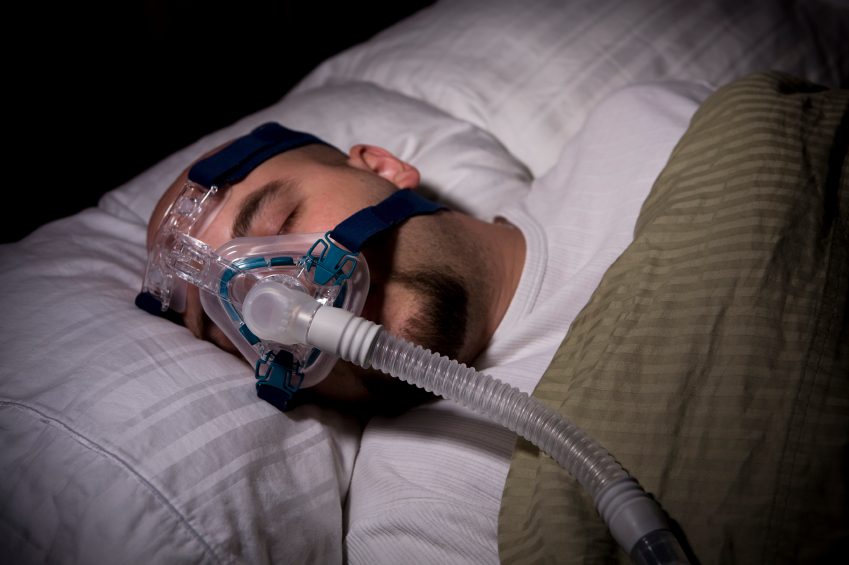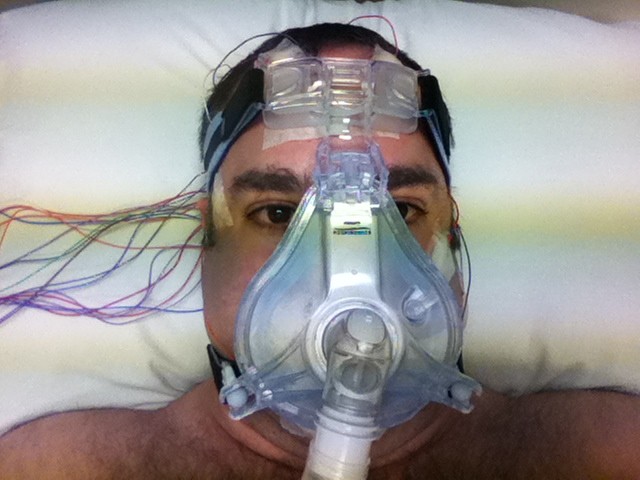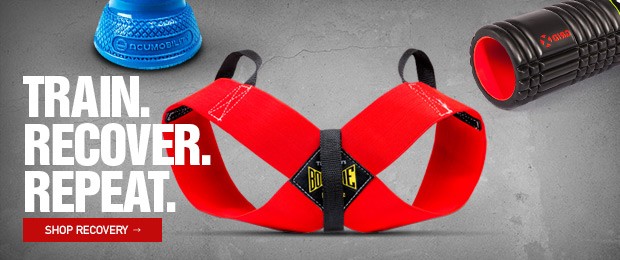
elitefts classic
A few months ago, I made the long overdue decision to deal with my suspected sleep apnea. Knowing that sleep issues like mine are commonplace among strength athletes, I decided to document the process.
Long story short, the process was a little strange, and somewhat of a pain in the ass, but so far, I’m happy to say that it was worth it. Here is the final installment of the “Choking on My Face” series.
After my initial sleep study, and subsequent diagnosis, the real waiting game began. The local sleep center schedules their studies about a month in advance, which meant that after finding out, under no uncertain terms that I don’t sleep, I had about five weeks to wait it out.
PART 1: Choking on My Own Face
On one hand, this sucked because I was now even more conscious of how tired I was. On the other, it was a great way to justify my nodding off during conversations, and being too tired to do shit around the house.
My Second Study
When the time finally came for my second study (I didn’t sleep long enough during the first one to try the CPAP) I had mixed feelings. On one hand, I was stoked to see how it worked. On the other, I wasn’t looking forward to going through the whole thing again.
When I got to the sleep center for Round 2, I was greeted once again by Claus, the vampirish-looking sleep tech. Remembering me, he was a bit less creepy than before, and seeing that I like to hit the weights now and again, B.S.’d with me about fitness while hooking up the equipment.
While Claus wired me like Steve Austin, a cute female tech stopped by the room to grab some tape off of Claus’ cart. I thought to myself, “Figures…50/50 shot, and I wind up with the weird dude for BOTH studies.” She introduced herself by saying “Hi, I’m Jen…I’m the creepy one.” I smiled at her obvious joke, at which point she laughed uncomfortably and then stared at me for a solid 30 seconds before walking off.
Wow.
CPAP Time
After the testing equipment was in place, it was time to put the CPAP in place. For the uninitiated, CPAP stands for Continuous Positive Airway Pressure. It’s essentially a small machine that pumps air through a hose and into a mask worn by the user. The air pressure prevents the tissues of the soft palate and airway from collapsing during sleep, and interrupting breathing.

Most users can get by with just a nasal mask, which is relatively unobtrusive. Knowing that I’m a mouth breather from the previous test, however, Claus hooked me up to a full face mask, which would allow me to breathe through either my mouth or nose without losing pressure.
The plan was to start me out at a pressure of 4 cmH2O (centimeters of water) which is the lowest setting on most machines. As he monitored me, Claus would gradually ramp up my pressure until I was no longer snoring and having hypoxic episodes. I could also tell him if I thought I needed more.
After a few seconds at 4, I didn’t really feel anything, so I told Claus to bump it up a bit, which he did. At 7, I could actually feel some pressure. It felt strange, but not bad. I actually kind of liked it. I remember thinking “Hey, I could really get used to this…”
I woke up the next morning about 30 minutes before I needed to. I didn’t have an alarm set or anything…I just woke up. When Claus asked me how I felt, I replied “I think I’m awake.” This was in stark contrast to the bag of smashed assholes I felt like after my previous study. While I felt great, this first taste of “normal people sleep” turned out to be a cruel tease…I was still about a month away from getting my own machine.
Results
The next week, I was back at my doctor to get my results.
Apparently, my first study didn’t give us the full picture of just how bad my apnea really is. While I averaged about 56 hypoxic events (stoppages in breathing) per hour in my first study, that number shot up over 90 for the first hour even with the CPAP, albeit on a low setting. By the time I settled into a normal breathing pattern, my pressure was up to 14. Although this is on the high side, it worked, and I got well into REM sleep, which I didn’t even get close to in my previous study.
Based on these results, my doctor called in my script to the CPAP supply company. Now, more waiting.
About a week or two later, I got the call from the rep to schedule my set-up. I asked for the soonest possible date, which was the next morning. That night, I was like a kid on the night before Christmas.
When the rep got to my house, he had me set up in about 20 minutes. The machine is super quiet, and the mask is more comfortable than the one used in my study. All we can really hear is the sound of air rushing through the hose, and the slight hiss of air escaping through the vent in the mask.
Part 2: Choking on My Own Face — The Diagnosis
My machine also has a ramp function, which slowly raises the pressure over 20 minutes. This was nice while I was getting used to it, but I really don’t bother with it anymore. I actually prefer to start with full pressure so that I can make sure my mask has a good seal on my face.
Is It Working?
So the verdict…is it working?
I think so. I didn’t notice a miraculous change like some users talk about, but after three weeks of use, I am feeling better, little by little. This really didn’t hit home until I accidentally fell asleep without it one night this past weekend. I wound up being irritable for most of the next day, and was dozing on the couch by about 5 p.m., which I used to do all the time, but not since I started using the machine.
Although Mrs. Dave probably won’t be crazy about my addressing it here, I know that tons of apnea sufferers are reluctant to get the machine because it may interfere with…uhh…evening festivities. Darth Vader was pretty badass back in the day, but you never saw him get any action in that thing did you?
I’m happy to report that so far, our relationship has been better since I started using it. It’s pretty simple really…when you feel better, you’re going to want it more. And since my snoring was affecting both of our sleep patterns, we’re both in the mood even more than before.
I don’t think I’m completely out of the woods yet though. My wife has caught me snoring through the mask on a couple of occasions, indicating that I either need to adjust my pressure, or find a better-fitting mask. These adjustments, however, are common within the first few months of CPAP use.
Surgery?
Even surgery hasn't been taken completely off the table. I initially decided against it due to the low success rate compared to CPAP, and the likelihood I would still need the machine anyway. Still, if we can’t get the apnea under control with the machine alone, I may wind up going under the knife as well.
Time will tell.
I’m sure most people would be bummed to learn that they need a machine to help them breathe at night, but most people don’t need to drag themselves out of bed on a Sunday morning to squat. If this machine can improve my training, (not to mention, quality of life) I’m all for it.
I just think of it as supportive gear for my lungs. In fact, I’m tempted to paint it orange.










2 Comments